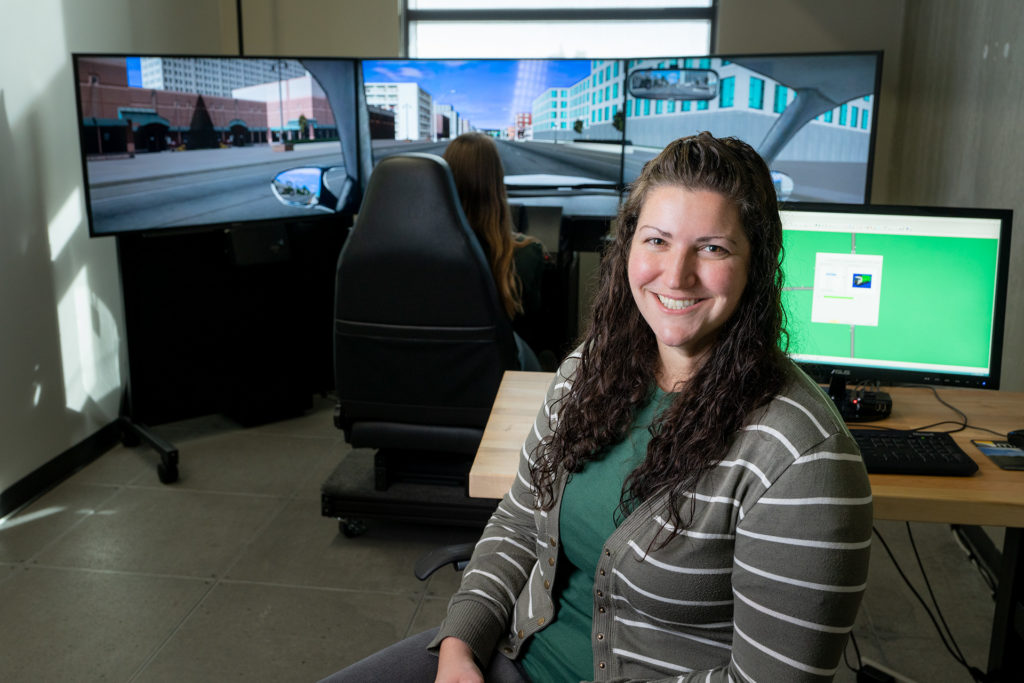
Medium-duty and heavy-duty vehicles help to keep this country moving – and they are moving quickly toward an electrified future.
Although they make up a smaller percentage of vehicles on the road than light-duty vehicles, medium-duty and heavy-duty vehicles are responsible for more than 25 percent of U.S. road transportation fuel use and carbon dioxide emissions.
Electrifying fleets of medium-duty and heavy-duty vehicles offers an immediate return on investment in terms of reducing pollution and fuel consumption.

Tom Bradley, department head and Woodward Professor in the Department of Systems Engineering and Erika Miller, assistant professor in systems engineering, received a $292,500 grant from the U.S. Department of Energy to address research and modeling gaps in planning for future electrification of medium-duty and heavy-duty vehicles.
This grant will support the research and fund one doctoral student for a little over three years. The project involves collaboration with industry partners from the Electric Power Research Institute and Lightning eMotors, a Colorado-based manufacturer of medium- and heavy-duty electric vehicles co-founded by a CSU mechanical engineering alumnus.
“Working with these industry partners provides a unique opportunity to include all of the stakeholders that need to be involved in this decision,” Bradley said. “They can share data with us and help guide what we are doing.”
Modeling for the real-world
Bradley and Miller will work jointly with the Electric Power Research Institute to develop an agent-based, bottom-up model of the economics, operation, and adoption of electrifying fleets of vehicles.
Agent-based modeling strives to understand problems at the individual level first, allowing for a more nuanced solution. Bottom-up modeling is rooted in real-world individual-level data, resulting in models that can be extrapolated to a larger population.

“The question often is: ‘How do we model human behavior?” Miller said. “With agent-based and bottom-up modeling, we are looking at real behavior and how these policies are really adopted.”
Lightning eMotors will provide fleet-based data that will be the foundation of the bottom-up modeling.
These models will provide clarity into sources of uncertainty in electric vehicle policy making and technology planning.
“There are a lot of questions about what medium- and heavy-duty electrification looks like. For example, how much charging infrastructure do we need? What kind of charging infrastructure?” Bradley said. “We don’t want to recommend that a company build a certain type of charging infrastructure only to realize we told them to build the wrong type of infrastructure.”
By incorporating real-world data, Bradley and Miller’s models will be better calibrated to guide future electrification efforts.
A classic systems engineering problem
The challenges that arise with electrifying fleets of vehicles represent a textbook systems engineering problem.
“This problem crosses all of the engineering disciplines, and we have to make sure we are satisfying all of the stakeholders,” Bradley said. “We also have to consider all of the interfaces between big systems.”
For example, electrifying medium- and heavy-duty vehicles involves not only the upfront cost of the vehicle and charging infrastructure, but also a trained workforce to maintain the vehicles.
“Many stakeholders have a plan to electrify, but they don’t always have an idea of how to do that,” Miller said. “This research can help a lot of people move towards an electrified future.”
Also helping is the momentum nationwide from governmental agencies and industry to electrify vehicles. The State of Colorado Energy Office’s 2020 Colorado EV plan states a long-term goal of 100% electric light-duty vehicles and 100% zero-emission medium- and heavy-duty vehicles.
“This is a complicated, complex, multidimensional problem with high stakes and no easy solution,” Bradley said. “Luckily there is a lot of momentum to figure this out.”